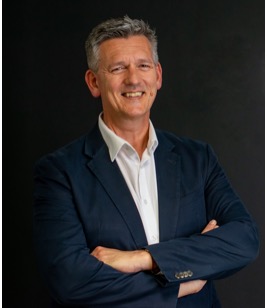 By Arjen de Bruin, Managing Director at OIM Consulting
By Arjen de Bruin, Managing Director at OIM Consulting
Professional services and auditing network Deloitte has listed sliding productivity and spiralling costs as key issues facing the mining sector, dedicating an entire series in its resource centre to unpacking the factors that are driving productivity down while costs go up.
While it lists several intrinsic and extrinsic causal factors – declining resource quality, talent shortages, inefficient capital allocation and elevated input costs – as significant contributors to this growing challenge, it doesn’t ignore the integral role of workforce planning; advising mines to foster a culture that discourages rampant spending, keep employees engaged and clarify the business model, among other tactics.
At OIM Consulting, where our focus is on building supervisor capability within the mining sector, we’ve seen the impact of poor planning in real-time. In fact, I would go as far as to say that it’s most likely the reason for your mine’s declining output. A bold statement perhaps, but the evidence is in the numbers, which we see every day.
When we enter a mine, we conduct a pre-assessment among the front-line leaders to determine the areas that we need to address in our coaching programme. We work across a wide range of mine types: from iron ore to gold and platinum; from conventional to mechanised; and from underground to open pit.
Time after time, we see ‘planning and organising’ recorded as the worst competency among supervisors, with analysis and problem-solving a close second. This is assessed by our industrial psychologists via a battery of tests, namely a situational judgement study, as well as a test scenario. We then observe our candidates, assessing how they respond, react and execute during the day.
We see that poor planning and organisation impact just about every aspect of the business; from output, to expenditure, and even safety.
And not only is it the lowest ranking competency; it also falls short of the competency benchmark. We rank general competency on a scale of 1-5, with 3 being the minimum requirement to qualify as ‘proficient’. Any number that falls short of this is deemed ‘below competent’, while 5 indicates excellence in an area. The average score for planning and organising within the mines that engage us falls short of the bare minimum, with an average score of 2.4 achieved. And in many mines that we enter, the score hovers closer to the 1.8 mark.
A South African research paper on project risks that affect poor performance in the mining industry found that there was a lack of appropriately qualified/experienced staff, finding that “corruption, poor project time planning and management, poor project cost management, poor procurement management and delays/interruptions are the top level risk elements. Project managers must eliminate these top level barriers/risk elements for smooth project execution and avoid cost overruns.”
Yet, a shortage of staff is not necessarily the issue – mining has an exorbitant labour bill that continues to climb. Mines are certainly investing in staff – at least in terms of the number of workers they hire. Rather, the operative word in this paper is “qualified/experienced” – or proficient, as we view it.
An observational research project conducted over the course of six-months in an underground mine by Sizwe Timothy Phakathi noted that author did not believe that the mine’s expensive labour bill was caused by the over-employment of underground workers, but rather the poor organisation of work; listing poor mine planning, labour shortages and absenteeism as contributors.
In the roll-out of our programmes, we notice that the minute planning and organisation are addressed (we see improvements of over 30%), the mine starts to meet – and even exceed – their production targets, while safety incidents decline, demonstrating a clear relationship between the two.
It’s clear that if we want to start holistically tackling the issues we’re facing as a sector, we need to start with empowering our most precious resource: our people.
